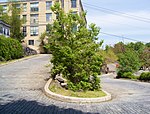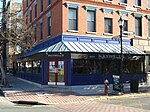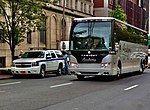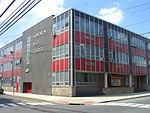Weehawken Cove
Bays of New JerseyBodies of water of Hudson County, New JerseyCoves of the United StatesHoboken, New JerseyWeehawken, New Jersey

Weehawken Cove is a cove on the west bank of the Hudson River between the New Jersey municipalities of Hoboken to the south and Weehawken to the north. At the perimeter of the cove are completed sections the Hudson River Waterfront Walkway, offering views of Manhattan and the Palisades. The name Weehawken comes from the Lenape, and can translate as "at the end of", either the Hudson Palisades or the stream which flowed from them into the cove, later the site of the nearby Lincoln Tunnel.
Excerpt from the Wikipedia article Weehawken Cove (License: CC BY-SA 3.0, Authors, Images).Weehawken Cove
Hudson River Waterfront Walkway,
Geographical coordinates (GPS) Address Nearby Places Show on map
Geographical coordinates (GPS)
| Latitude | Longitude |
|---|---|
| N 40.756425 ° | E -74.025053 ° |
Address
Hudson River Waterfront Walkway
07086
New Jersey, United States
Open on Google Maps








